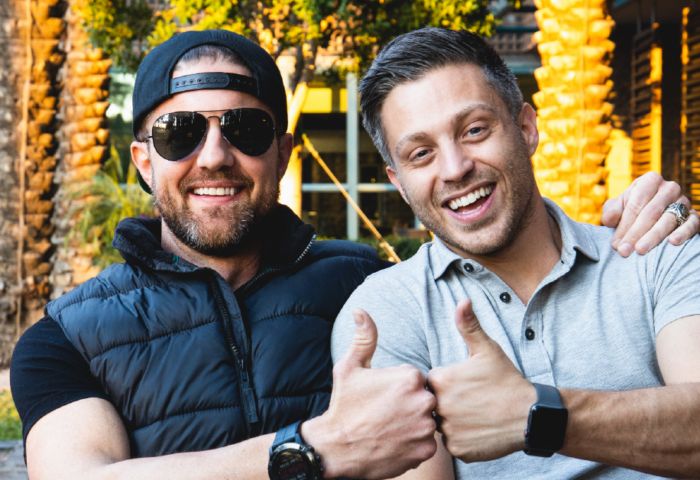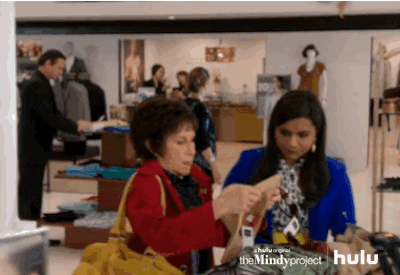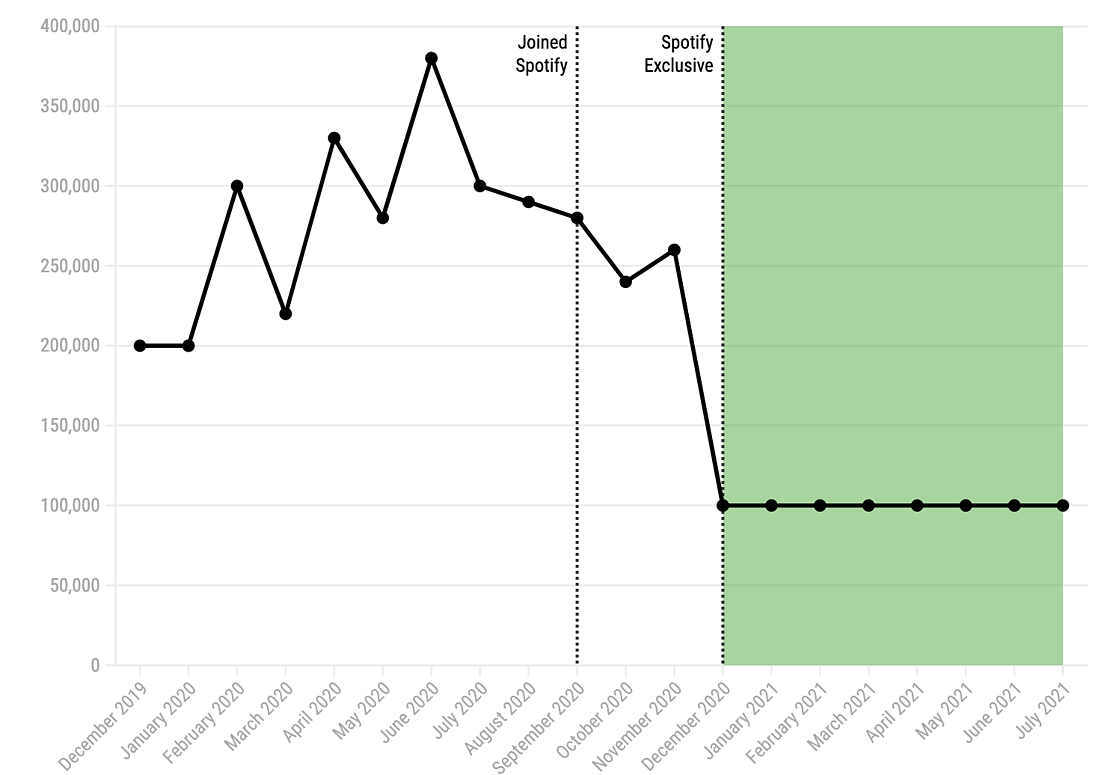How Russ Perry Built Design Pickle While Maintaining Work-Life Balance
September 1, 2021
YEP, IT’S POSSIBLE
How one CEO found WLB while still scaling his biz
Running a business isn't always glamorous. It's risky, stressful, and at times downright difficult. Not to mention that the high stakes can negatively impact your personal goals, relationships, and your health if you're not careful.
But growing a business doesn't have to be this way. Meet Russ Perry, the founder, and CEO of Design Pickle, a flat-rate creative design service company operating internationally. He's proof that work-life balance is totally possible for business owners.

In just five years, his team scaled to 500 strong across six different countries. And he found a way to run a thriving business that makes him feel "post-Thanksgiving satisfied." Here's how he did it:
- Admit when something is wrong. Before Design Pickle, Russ ran a time-sucking creative agency. And he justified the long hours by telling himself it'll all pay off eventually. But when his marriage and health slipped, he had to be honest with himself: what he was doing wasn't working.
- Start over (if necessary) with a clear vision. Russ shut down the creative agency to focus on something new. But he didn't know what that new thing was. So, he asked himself: "What would I like to accomplish in my life?" Then, he wrote down everything that came to mind, calling it his life's vision statement.
- Use that vision as your compass. Whenever new ideas or business opportunities came to Russ, he used his vision to help him say "yes" or "no." Meaning, he said "no" to anything that would take too much away from his personal life. But when the idea of Design Pickle came to mind, it was a clear "yes" for him.
- Reflect and re-evaluate. Every quarter, Russ checks that what he's working on still aligns with his personal vision. He reflects on how he's doing in all the important areas of his life (body, being, balance, and business included). And he creates new goals that'll keep him aligned with his vision in the coming quarter. That way, he never lets work run his life again.
While your situation may be different than Russ', the principles are the same: Get clear on what work-life balance means to you. Then, hold yourself accountable for it. Because when you get clear on what work-life balance looks like for you, creating it becomes much easier.
👉 Steal Russ' full WLB playbook.
SHOP ‘TIL YOU DROP
TikTok is now shoppable thanks to Shopify
Now you can do more on TikTok than binge-watch videos until the sun comes up (don't worry, we're right there with you). The social app has just announced they're partnering with Shopify, so you can sell your products and make purchases directly on the app.
Up until now, users could only buy things on TikTok through advertisements. But, with the new partnership, businesses (big and small) can add a "Shopping" tab to their profiles and link to specific products within their posts.
This means that your customers can now purchase your products immediately (and sometimes, impulsively), right when their interest is sparked. And they can do it with less friction.
Plus, the new in-app feature will likely help content creators, small businesses, and TikTok alike to up their revenue game with this new, seamless experience. Especially because TikTok was the second-highest app for consumer spending - even before rolling out in-app purchases.

The feature isn't available to everyone quite yet. But TikTok promises that all merchants will have access to the feature later this fall.
So far, several companies have access to the piloted version of this feature and are giving it a whirl (like Kylie Cosmetics, for example). And the results have yet to be seen. But it's a safe guess that shopping on TikTok might be a great bet, considering the app's 2B downloads and 689M+ active users to date.
So, be on the lookout for when this feature hits your account! If you're ready to jump on the TikTok shopping bandwagon as a merchant, you just may see an uptick in late-night orders!
👉 Learn more about the feature.
BEHIND THE SCENES
How we brought "This Is How You Do It" to life
https://youtu.be/GyDDaWYxX1k
During a few hot days in Brooklyn, we recorded a song, shot a music video, and filmed a six-part ad campaign. All with R&B icon Montell Jordan and entrepreneurial legend Daymond John.
We call this masterpiece "This Is How You Do It." But you already know that. What you probably don't know is how it all came together.
👉 Take a look behind the scenes.
DEAL GONE WRONG
Was Joe Rogan duped in his $100M Spotify deal?
Joe Rogan is no stranger. The comedian turned podcaster is known for schmoozing high-profile celebrities. He's debated with pseudo-politician Kanye West, smoked a joint with Elon Musk, and got personal with Miley Cyrus.

As a result, the podcaster saw 200M average monthly downloads in 2019, making him possibly the best at what he does. And just like the rest of us - Spotify took notice.
In May 2020, the streaming platform approached Joe with an eye-watering $100M exclusivity deal. The company hoped that the podcaster would bring his influence with him, securing their spot as the #1 podcasting platform. And the day Spotify announced the deal, their market cap jumped by roughly $4B.
Fast forward, and Joe has been exclusively streaming on Spotify for about a year now. And while the platform doesn't release exact data on unique listens per episode, they insist that the show is performing "above expectations" as far as bringing in new listeners is concerned.
But a recent Verge investigation begs to differ. Instead, they found that Rogan's influence and relevance have significantly waned since going exclusive. And it's starting to look like "a sizable portion of his audience likely didn't follow him when he made the jump," per Ashely Carman, author of the study.
Here's the proof:
- Guests on the show used to expect 4k new Twitter followers following their episode airing. Now, they see about 2k, suggesting listenership dropped by about half.
- In 2020, Rogan saw steady spikes in people searching for his brand and consistent growth. But since the deal, baseline interest has dropped, and he's only seen 2 spikes.
- Before Spotify, Rogan's YouTube channel saw 265k monthly new subscribers. But since going exclusive, he's averaging only about 100k (see below).

Regardless of all this, Spotify isn't struggling to secure new exclusivity deals with other podcasters. Most recently, they've signed Call Her Daddy's Alex Cooper and Armchair Expert's Dax Shepard. It's yet to be seen if they’ll see the same lagging relevancy.
So, while we won't say good ole Joe was ripped off, we're asking: was the deal worth it? Because from where we're sitting, Joe probably could've gotten a lot more if he hadn't taken the deal. And if you're a podcaster only streaming on one platform (AKA locking yourself into an unofficial exclusivity deal) - why are you selling yourself short?
👉 Read the investigative report.
TL;DR
This week's highlight reel
- Lol, JK. OnlyFans takes back its decision to ban sexually explicit content less than a week after its original announcement. The reason? They "secured assurances necessary to support our diverse creator community."
- Hot off the press! Forbes plans to go public via a SPAC in late Q4 this year. Meaning, editorial content is (still) very much alive and kicking.
- Sorry, kiddos. Thanks to the global shipping crisis, prices for popular toys might increase by upwards of 10% this holiday season. And it's affecting companies of all sizes.
- A helping home. Airbnb is now allowing anyone with available housing space to host Afghan refugees in need. Don't have the extra space? They're accepting donations to help fund temporary housing for refugees as well!




